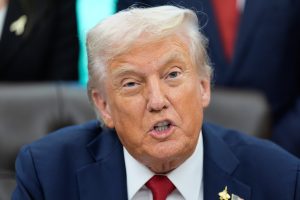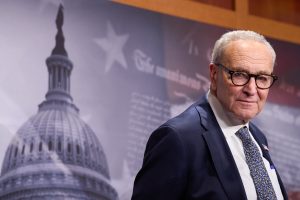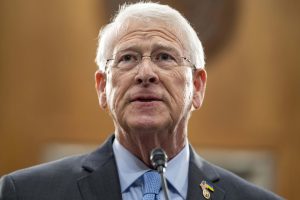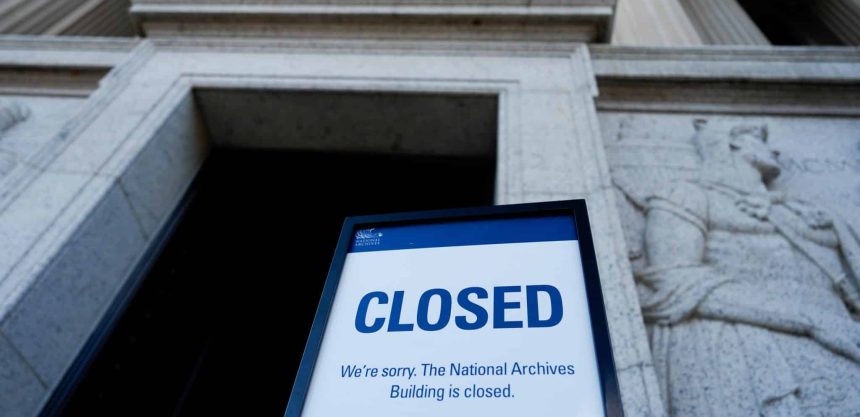As parts of the federal government begin shutting down after Congress failed to reach a deal on a funding measure, U.S. Rep. Mike Ezell (R-Miss.) doesn’t believe the shutdown will be prolonged.
“I don’t think it’s going to last too long. We had a conference call Monday with (House) leadership, and they believe this could be three to five days, maybe a week,” Ezell said on Mornings with Richard Cross.
The longest government shutdown in U.S. history happened during Trump’s first term and lasted 35 days starting at the end of 2018 and going into 2019. Demands for money to build his U.S.-Mexico border wall was the crux of the issue before Trump retreated and lawmakers were able to reach a funding deal.

Trump may now have four shutdowns to his name throughout his nonconsecutive tenure, but he doesn’t have the record for most shutdowns. The government closed its doors eight times during Republican Ronald Reagan’s eight years as president, all of which lasting for less than three days, while Democrat Jimmy Carter presided over five government shutdowns during his lone term in office.
For Ezell, he believes Trump’s unwillingness to budge on certain policy points – this time, a main one being healthcare spending – will work out in his favor, opposed to Democrats’ belief in their stand against a GOP-led funding plan. While the president’s formal powers are not increased during a shutdown, it can provide additional leverage by being able to determine what services are essential and which programs will be cancelled.

“It’s going to cause so many problems, and I tell you what, they’re handing over all the keys to President Trump and they don’t want that,” Ezell said. “They think they want that, but just look at what’s been going on over the last 10 months. When you give the president the authority that he’s going to get during the shutdown, he’s got the keys to everything.”
What caused the latest shutdown?
Lots of finger-pointing has happened over the past couple weeks.
The biggest holdup on a larger bill was healthcare as Democrats vowed not to pass any bill they believe would make it more difficult for Americans to afford government-provided coverage. The party called for an extension of soon-expiring tax credits, originally implemented under President Barack Obama, that make coverage cheaper for millions and for a reversal of cuts to Medicaid that have already been made by Trump.
House Republicans introduced and passed a smaller, stopgap measure on Sept. 19 that would have kept the government open until mid-November as broader negotiations continued. Ezell called it a “clean bill,” and U.S. Rep. Michael Guest (R-Miss.) said afterward that the chamber had “done its job.” The Senate then failed to pass that measure twice before Tuesday night’s deadline, because even with a majority, Republicans needed some crossover votes to get it done.

U.S. Sen. Roger Wicker (R-Miss.) released a statement Wednesday morning, blaming Senate Minority Leader Chuck Schumer (D-N.Y.) and urging his chamber colleagues to pass a stopgap measure as soon as possible.
“The government shutdown has occurred because Senator Chuck Schumer is holding the funding process hostage,” Wicker said. “The continuing resolution would have allowed the government to function while we finish the appropriations process in a bipartisan way.”

“The longer Senator Schumer plays games, the greater the damage to national security, service members, and veterans,” Wicker continued. “I urge my Democrat colleagues to adopt the House-passed bill, which would immediately reopen the government.”
Schumer, who met with Trump and other Congressional leaders on Monday, said after the last vote that his party wanted to “sit down and negotiate, but the Republicans can’t do it in their partisan way, where they just say it’s our way or the highway,” according to ABC News.
What stays open and what closes during a shutdown?
Typical functions that are critical to protect lives and property are deemed essential and will remain open. For example, FBI investigators, CIA officers, air traffic controllers, and members of the Armed Forces keep working. These people will stay on the job but don’t get paid until after the shutdown ends.
The U.S. Postal Service will continue operating as usual, and airports will remain open to travelers. Social security payments will still go out, too. Smithsonian museums and research centers plan to open through at least Monday, while the National Park Service but could keep most parks open with less staff.
With a lapse in funding, though, federal law requires agencies to furlough their “non-excepted” employees, those who don’t protect lives and property. According to the Associated Press, roughly 750,000 federal workers are expected to be furloughed, with Trump threatening to use the opportunity to continue his downsizing of the government through firings and permanent closures.
Seniors relying on Medicare coverage can still see their doctors and health care providers can be reimbursed. Veteran health care and other veteran programs also continues during a shutdown.
Lawmakers continue to get paid during the shutdown as constitutional provisions protect their compensation from being altered.
The Associated Press contributed to this report.









